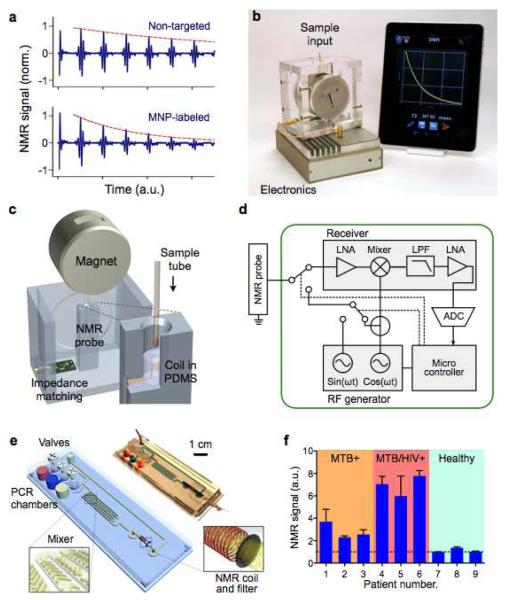Figure 3. NMR-based magnetic detection.
(a) Assay principle. Samples containing magnetically-labeled biological objects display faster relaxation of proton NMR signal. (b) A new miniaturized NMR (μNMR) system was developed for point-of-care operations. The system features automatic system tuning and user-friendly interface. (c) Schematic of the magnet assembly and the NMR probe. The microcoil is embedded in a polymer (polydimethylsiloxane/PDMS) block with the entire coil-bore accessible, and a thin-walled tube is used for sample-loading.16 (d) The NMR electronics is designed for standalone operation and high programability. (e) A multifunctional fluidic cartridge was developed for bacterial detection.81 The device integrates polymerase-chain-reaction (PCR) chambers, torque-assisted valves, mixing channels and a microcoil. Bacterial samples, PCR reagents, microbeads, and MNPs are loaded onto the chip. After on-chip PCR, magnetic labeling of the microbeads takes place along the mixing channel. The magnetically-labeled beads are then purified and concentrated into the μNMR probe (microcoil) by the membrane filter. (f) The fluidic device in (e) was used to detect Mycobacterium tuberculosis (MTB) in clinical sputum specimens. Compared with samples collected from MTB-positive patients, samples collected from MTB/HIV-positive patients showed higher bacterial burden. Data is represented as mean ± s.d. from triplicate measurements. Reproduced with permission from ref. 16. Copyright 2011 RSC Publishing. Reproduced with permission from ref. 81. Copyright 2013 Nature Publishing Group.)

